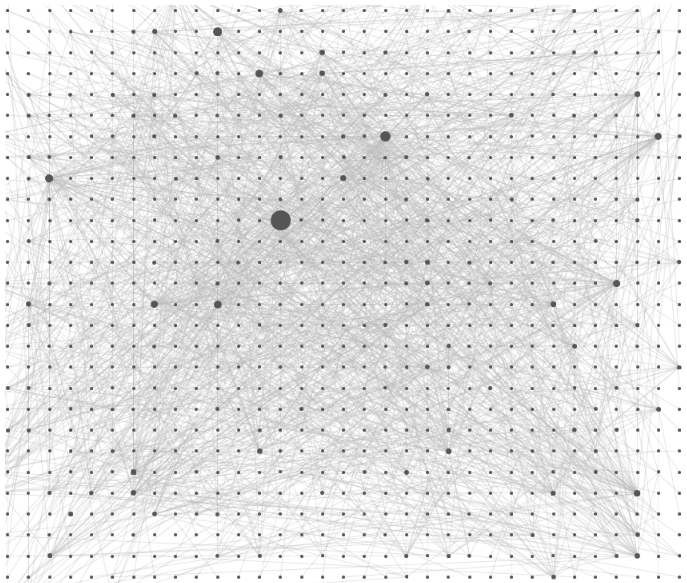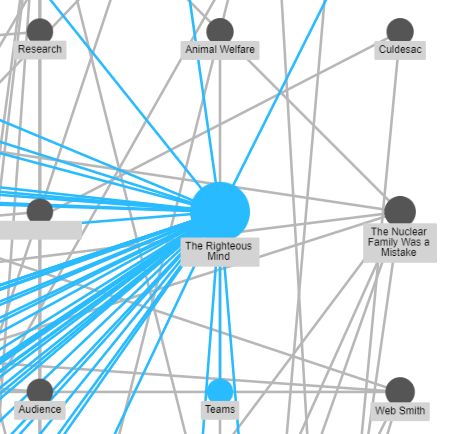
How To Build A Digital Zettelkasten
Effortlessly link ideas together with Roam Research. It’s like a bank account for your brain
April 1, 2020
🔓 This is a free preview of a Premium Members only post! 🔓
In our last post, we discussed Niklas Luhmann’s Zettelkasten method and how to build one with physical notecards. Catch up here.
The gist is this: take notes on cards, review them, then link them together. It’s simple, but powerful.
It’s powerful because, thanks to the way notes are linked together in a Zettelkasten, the more information you add, the more you increase its overall value.
It’s like compound interest: if you put a dollar in a savings account today, over a lifetime, that dollar will create many more dollars for you. Likewise, in a Zettelkasten, the more notes you add, the more the value of each individual note compounds.
New concepts reference old concepts, which creates an ever-increasing network of knowledge. You will remember more and create more connections, leading to insights that you wouldn’t have otherwise developed.
A Zettelkasten is like an interest-paying savings account for your mind.
Luhmann used physical cards to build his Zettelkasten, and back in the 1960’s that was the best option. However, today we have software and computers. They give us a few advantages over notecards:
- Search. Searching through a box of physical cards is tedious. It’s much easier to type in a search bar.
- Linking. Links in a physical Zettelkasten are equivalent to hyperlinks online. Computers make links clickable and the underlying information accessible in an instant (so speed is an advantage, too).
- Storage. If you’re going to index a lifetime of knowledge on notecards, you’re eventually going to need a lot of space for boxes. It’s a little easier if you keep this information on the internet, where you can get to it from your laptop or phone, or any device anywhere in the world.
Given how well-suited computers are to creating virtual notecards and linking them together, you might think that there would be a tool that makes creating a Zettelkasten easy.
Indeed, over time we've seen various attempts at making Luhman's dream a reality.
Google tried to answer your questions by indexing the web, but it’s too broad and unfiltered to be an effective personal Zettelkasten. Plus, Google exists to help you find only what you’re looking for — there’s no room for intellectual surprise or creativity, or for you to create your own links between search results.
Twitter came closer to the ideal. They broke down multi-idea web pages into single-idea Tweets so that you could link individual ideas together in complex ways. However, you can only link one idea at a time, and it’s hard to search through billions of tweets to find the information you’re looking for.
Evernote took a different approach by being a note-taking app. However, it still has a top-down file structure and is not ideal for building a Zettelkasten. And most other note-taking apps have similar limitations; they tend to be linear in nature, and a Zettelkasten is really a web of interlinked ideas.
There is one tool, however, that is extremely well suited for making a Zettelkasten: Roam Research.
What is Roam Research?
Roam is a note-taking tool designed for networked thought. In contrast to a file structure on a computer (or with Evernote and Notion), in Roam you link thoughts together at the idea level. It encourages you to think topically instead of linearly.
I first heard about Roam at a productivity meetup I attended about a year ago. Conor White-Sullivan, Roam’s founder, was there and I was immediately impressed by how he spoke about knowledge management. I knew I had to try what he was building.
I was sold from the first time I logged in. I love it because it reduces the cognitive friction to adding information to my database.
Most knowledge management systems get too concerned with having a procedure for how to treat every kind of information (book quotes, summary comments, random thoughts, etc.). It gets overwhelming and I rarely stick with it.
By contrast, Roam makes it much simpler. All kinds of information — regardless of origin — can be quickly referenced. The result is that I end up synthesizing concepts together much more effectively than I have with other knowledge management tools.
Let me explain how it works.
What Makes Roam So Great
Roam has some excellent technical features — such as supporting several types of multimedia and being incredibly fast — but the best parts of Roam stem from how it allows you to effortlessly structure information.
Its first benefit is bi-directional linking. You can instantly make a word its own page, and easily flip between pages with a single click.
Additionally, Roam has a built-in sidebar that can pull up any page at any time (including the one you’re currently working on). This is extremely useful for drafting, synthesizing ideas, and moving information around.
Finally, the cognitive friction to tag and link concepts together is very low. The keyboard shortcuts make it quick and there’s not really a cost to linking too many concepts or linking the wrong concepts.
As an example of how many times you can link things together, here is a screenshot of my Graph Overview — a visual representation of all my ideas in Roam, and how they connect.
And here’s a zoomed in image of one of the books I read recently, The Righteous Mind by Jonathan Haidt. Look how many other topics are connected to just this one book!
How to Build a Zettelkasten in Roam
I primarily use Roam to help me remember what I read. And it turns out that the process to create a Zettelkasten in Roam is very similar to that of making one with paper note cards. It’s just easier.
Let’s use the book, The Righteous Mind as an example. Here’s how you would take notes on it in Roam.
Hey there,
Dan Shipper here. I know it’s tough out there. I’d love to help you through this. If you want a Superorganizers subscription but for any reason (COVID or otherwise) you can’t afford it right now, let me know and we can work something out.
Or, honestly, feel free to get in touch if you’re just feeling lonely, or scared, or want someone to chat with. Just hit reply to this email — you’ll go right to my inbox.
This community matters to me, and I’d love to be supportive if I can.
Stay safe out there!
Dan










Comments
Don't have an account? Sign up!